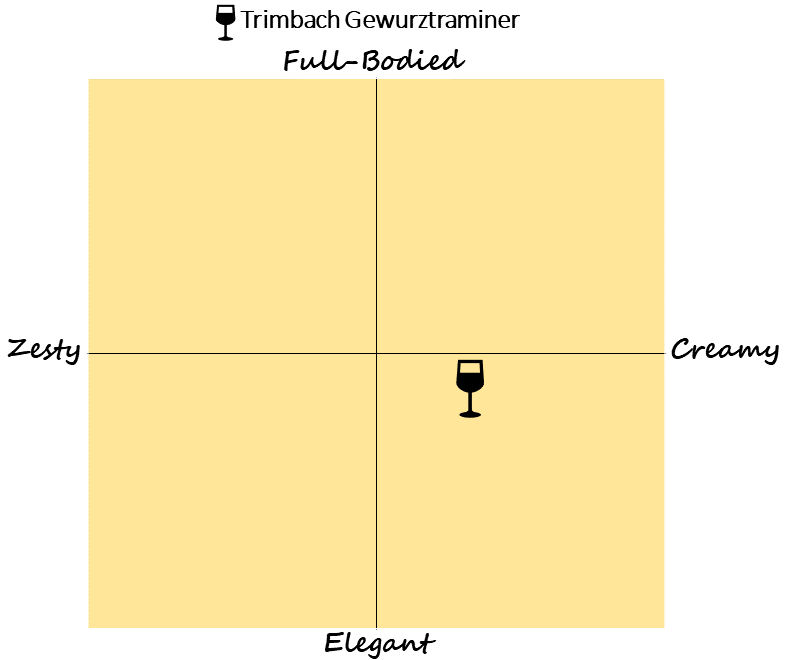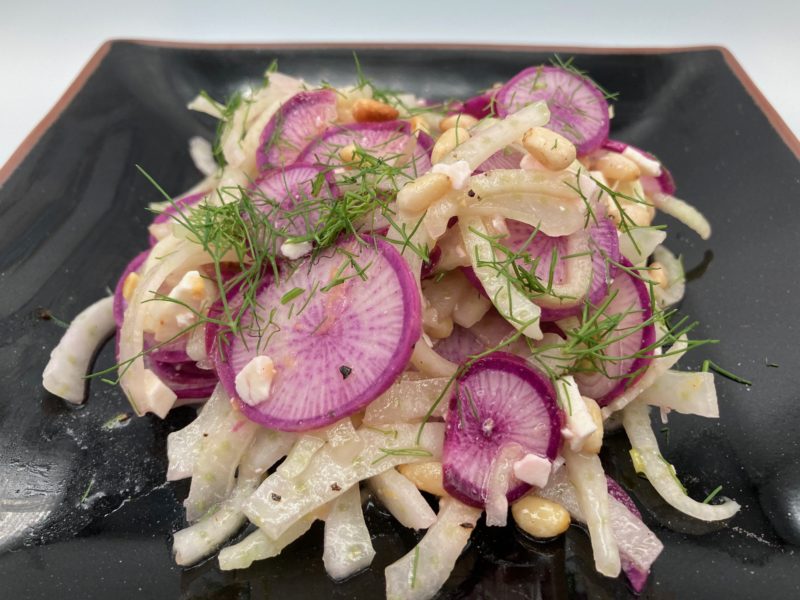Ever wonder whether to serve salad first or last with dinner? In a French practice known as “service à la française,” the salad is typically served as a palate cleanser after the main course and before the cheese course or dessert. This tradition stems from the belief that the acidic nature of the salad dressing aids digestion and prepares the palate for the rich and savory flavors of cheese or dessert that follow.
While this is true in traditional French dining, does the typical American meal include a dessert? Maybe. But a cheese course? Rarely, if ever. Given these differences, we believe a better sequence for an American meal is to start with the salad. It not only aligns better with our meal structure but also offers a fresh and light beginning to the dining experience, setting the stage for the courses to come.

Serving salad first is more than a culinary choice; it’s a health-conscious decision supported by science. In the 2022 book, Glucose Revolution, biochemist Jessie Inchauspé documents how the roughage from a salad (and all vegetables) slows down the absorption of glucose from the main course. This process helps manage the sugars and carbs (which convert to sugars) found in most entrées. By slowing down glucose absorption, salads can prevent the glucose spike that often leads to that heavy, leaden feeling after a big meal.
However, salads are often predictable and even boring. Adding fruit or candied nuts might make them more interesting but can undermine the salad’s role as a glucose absorber. To strike the perfect balance of novelty, healthy and delicious, try this Radish and Fennel Salad (recipe below). Crisp, refreshing veggies are spiked with lemony dressing, buttery toasted pine nuts and tangy, creamy Feta cheese. This healthy starter not only adds interest to your menu but effectively prefaces your entrée, delivering fiber and fat while mitigating a glucose spike.
Wine Pairing
Only a white wine will do with this salad. Lemony olive oil, tangy cheese and buttery pine nuts emerge as the principal flavors of the dish and help narrow the wine choice. High acidity wines like Riesling, Sauvignon Blanc, Albarino and unoaked Chardonnay will overpower the salad; a sip of these wines after a forkfull leaves one only tasting the wine. We found that lower acid wines like Grenache Blanc, Pinot Gris and dry Gewurztraminer did a better job of complementing the salad flavors without dominating the finish. This Gewurztraminer (guh-vurts-TRA-MEE-NER) from the Alsace region in France filled the bill.


Gewurztraminer, a grape with a long history of cultivation, is grown from New Zealand to British Columbia to Northern Italy. Known for its striking aromatics, the wine calls to mind pineapple, peaches, rose petals and lychee. On the palate, it delivers rich fruit, low acidity and a round mouthfeel that perfectly complement the cheesy, buttery notes in the salad.
Recognize that Gewurztraminer can be vinified from dry (like this Trimbach) to sweet, and every level of sweetness in between. A clue to the amount of residual sugar in the wine is the % alcohol printed on the label: 14% = dry; 7-8% = very sweet. Even at 14% alcohol, the rich fruit of the Trimbach without food will strike some as subtly sweet. Tasted with the salad, however, the hint of sweetness disappears, melding and enhancing the complex flavors of the salad . . . without overpowering. Boomers reading this may channel the Turtles hit “Happy Together” – the Millennial equivalent of Ed Sheeran’s “Perfect”.
We published this post because we love this refreshing salad recipe. But we also wanted to showcase this Gewurztraminer in the hope that you will give it a go – with this Radish and Fennel Salad, your favorite spicy Asian dish, or as an apéritif with Washed Rind or Hard Cheeses. Apprécier!
Notes
This salad recipe was adapted from Jenn Louis of Lincoln and Sunshine Tavern, Portland OR
Ingredients
- Salad Ingredients
- 8-10 small-to-medium radishes, very thinly sliced
- 1 fennel bulb, trimmed and very thinly sliced
- 1 tablespoon picked fennel fronds
- 4 tablespoons toasted pine nuts
- 2 ounces crumbled sheep’s milk feta cheese
- 1-1/2 tablespoons thinly sliced shallot
- Salad Dressing
- 2 tablespoons lemon juice
- 1 tablespoon lemon zest
- 3 tablespoons olive oil
- Salt & pepper to taste
Instructions
- In a large bowl, toss together all of the Salad Ingredients.
- In a separate bowl (or jar), whisk (or shake aggressively) the Salad Dressing ingredients.
- Toss the Salad with enough dressing to coat; add salt & pepper to taste.
- Note that you will have leftover dressing.
- Garnish with extra fennel fronds, feta cheese and pine nuts as desired.


Merry Sheils says
This looks like a wonderful salad and could even be a main course, given that it has cheese and nuts. I can’t wait to try it. Thanks for sending
Steven says
Thanks for commenting, Merry. Alway appreciated. Hope you are well!
Mark D. says
Oh, man the wife is going to love this salad idea, and the Gewurtztraminer is already in the cellar. Thank you for sharing!
Steven says
Thanks for the comment, Mark. Always appreciated. Hope you and your wife enjoy the pairing!
Mark D. says
Father’s Day came and went- and so did this pairing. Peg placed the delicious salad at the front of the meal- a la The Glucose Goddess (Inchauspe’s Instagram handle). A 2013 Bechtold gewürztraminer poured a lovely straw color, and paired beautifully with the salad. A really fun pairing!
Steven says
Much appreciate the feedback, Mark, and so glad you, Peg and family enjoyed it. Looking forward to your return to the Lake later this month